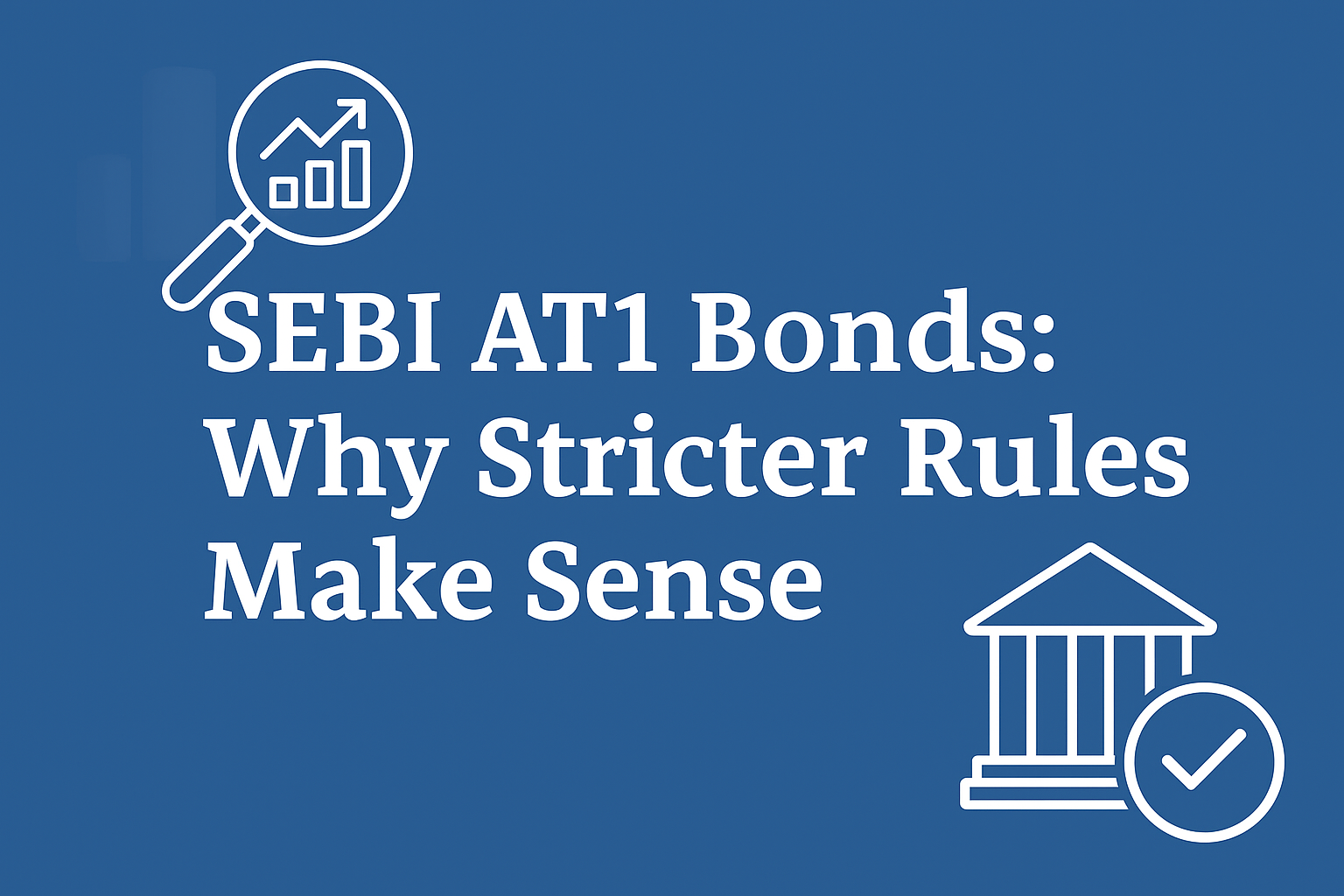Announcement: Lorem ipsum dolor sit amet, consectetur adipiscing elit. Donec et quam blandit odio sodales pharetra.
SEBI is justified in bringing AT1 bonds under stricter regulation
On 12 March, the MOF wrote to SEBI asking them to repeal the order on AT1 bonds. What exactly was the SEBI order and why was the government so averse to the order? Here is why SEBI is right.

Table of Content
AT1 bonds circular and after
SEBI had stipulated some changes to the AT1 bonds investment by capital market intermediaries. Here are some of the key changes suggested by SEBI. It had called for capping the investment limit of a debt fund in AT1 bonds of one issuer to 10% of the corpus and 5% in the case of an individual scheme. The second major restriction was that close ended funds would not be permitted to invest in AT1 bonds. That is because the regulations pertaining to close-ended funds do not permit investing in debt instruments with a maturity longer than the maturity of the close-ended fund. But, the most controversial was the 100-year tenure stipulated for AT1 bonds. AT1 bonds are perpetual bonds issued by banks and are quasi-equity. SEBI’s view was that after Yes Bank and LVB had repudiated their AT1 bonds, there was a need to better reflect the risk of such bonds and their true value. Indian mutual funds have an exposure of close to Rs.37,000 crore in AT1 bonds which are currently classified with the G-Secs. With 2 recent AT1 repudiations, SEBI felt that a 100-year maturity would force MFs to better reflect the risk and market value of their holdings in AT1 bonds.
Why banks are unhappy?
Banks rely on AT1 bonds as an easy means of boosting their Tier-1 capital. Mutual funds have been a huge captive market for such AT1 bonds and banks are not keen to lose out on that market. The SEBI limits on investment in AT1 bonds and the 100-year tenure would have discouraged MFs from investing in these AT1 bonds. The tenure fixation would mean that MFs would take huge provisions for such AT1 bond holdings. While the existing holdings would be grandfathered as per the circular, banks were skeptical that such a move would discourage MFs from participating in the future AT1 bond issues. That is why the banks had lobbied with the government to get this SEBI circular overturned.
SEBI is on the right track
SEBI, as the regulator of capital market intermediaries, has adopted the right approach. Classifying AT1 bonds like G-Secs is conceptually wrong as it does not reflect the risk. If provision rules are made stringent, it would make MFs also more wary about investing in AT1 bonds as it would entail a huge cost. The AT1 bond defaults by Yes Bank and LVB have highlighted the risks in AT1 bonds and SEBI is right in trying to ensure that MF investors are protected. There have been a number of cases where debt fund investments have come under a cloud. It is important to sort this issue to keep investor faith in MFs intact!
Comments